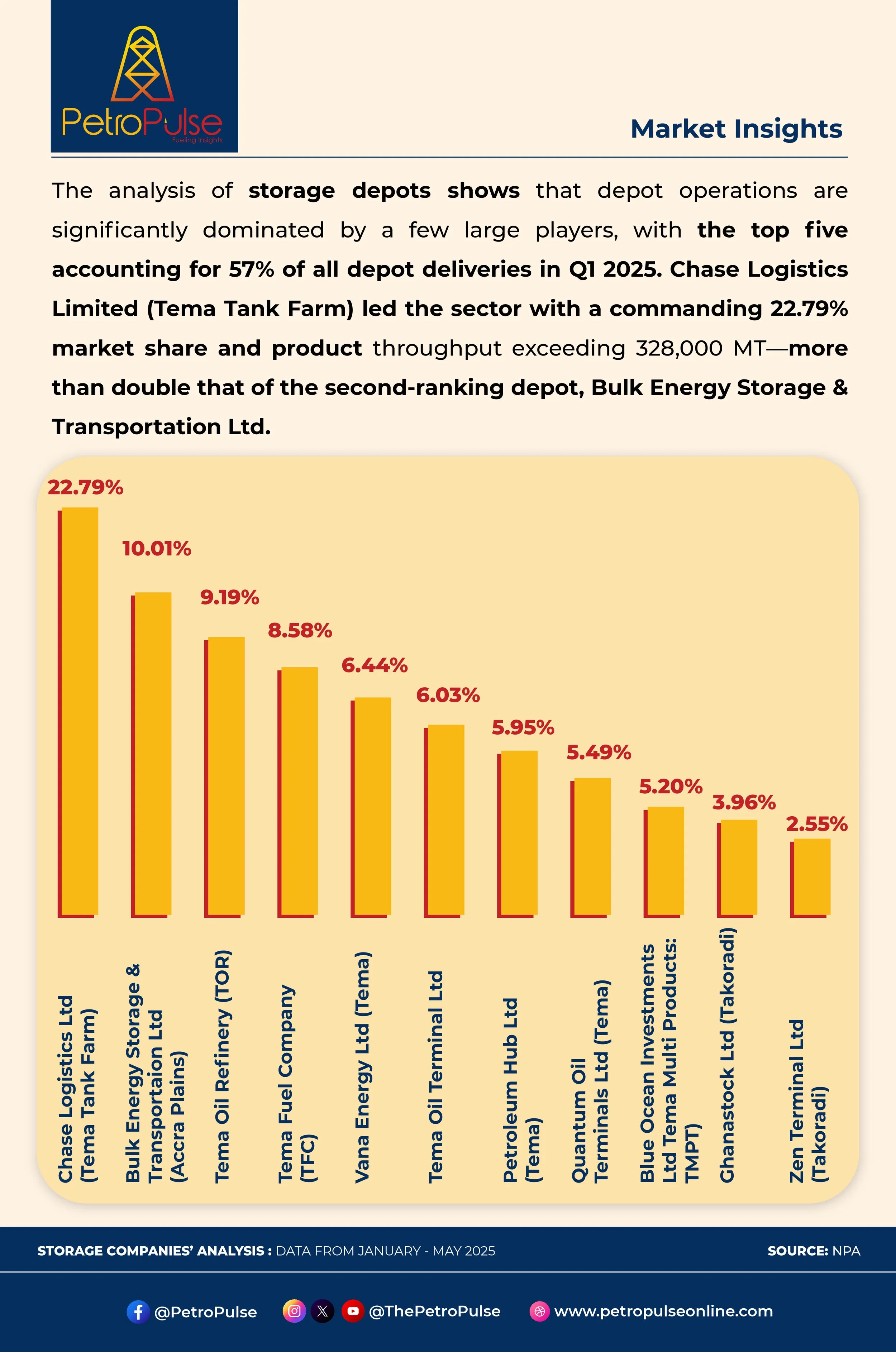Depot Performance Highlights Infrastructure Gaps in Ghana’s Petroleum Supply Chain
Storage depots are the backbone of petroleum logistics—they manage inventory, ensure geographic availability, and serve as the final buffer against fuel shortages. That’s why the findings from the National Petroleum Authority’s (NPA) Q1 2025 Petroleum Downstream Performance Report are particularly revealing.
The report shows that five depots alone handled 57% of total product throughput in the first quarter of 2025, indicating a stark concentration in infrastructure capacity. Chase Logistics Limited, operating the Tema Tank Farm, led the pack with 22.79% market share and over 328,000 MT in throughput—more than twice as much as the next largest player, Bulk Energy Storage & Transportation Ltd.
Other depots captured between 2.55% and 10.01%, reinforcing the idea that while many contribute to the grid, only a few anchor the system.
This is important because depot performance affects everything from fuel delivery timelines to national strategic stock levels. If one or two major depots go offline due to maintenance or external disruptions, the national supply chain could face bottlenecks—with ripple effects on pricing, availability, and even public confidence.
The data also brings renewed attention to BOST’s modernization agenda. As BOST pursues infrastructure upgrades, regional partnerships, and a digitalized depot operations model, the NPA’s Q1 report provides clear justification: the system needs more evenly distributed capacity and greater flexibility in product handling.
Furthermore, the concentration in depot performance has implications for Ghana’s regional fuel supply ambitions. If the country is to become a hub for petroleum logistics in West Africa—as envisioned in the PHDC’s masterplan—then its depot ecosystem must be robust, resilient, and regionally linked.
Ultimately, the Q1 figures don’t just quantify dispatches—they highlight who holds the keys to Ghana’s petroleum flow, and what must be done to future-proof that critical infrastructure.


